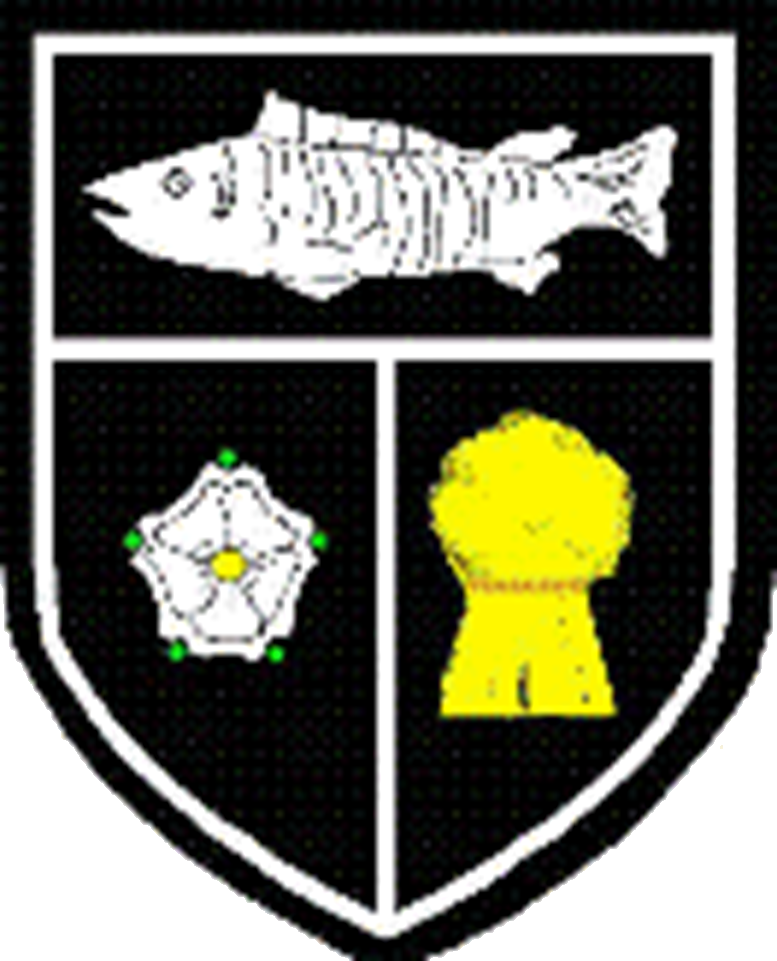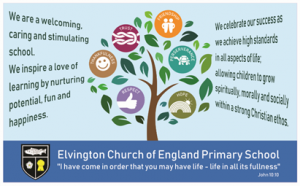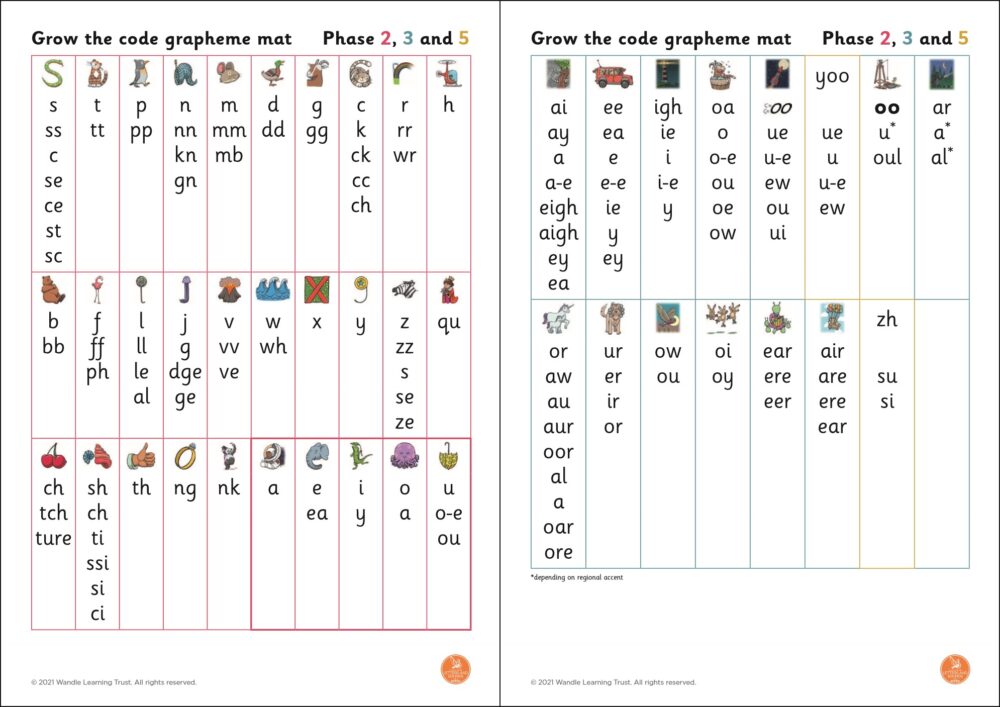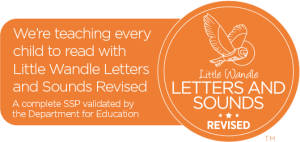 Our Approach to Early Reading
Our Approach to Early Reading
At Elvington Church of England Primary School we believe that for all our children to become fluent readers and writers, phonics must be taught through a systematic and structured phonics program.
At Elvington, we believe that all our children can become fluent readers and writers. This is why we teach reading through Little Wandle Letters and Sounds Revised, which is a systematic and synthetic phonics programme. We start teaching phonics in Reception and follow the Little Wandle Letters and Sounds Revised progression, which ensures children build on their growing knowledge of the alphabetic code, mastering phonics to read and spell as they move through school.
As a result, all our children are able to tackle any unfamiliar words as they read. At Elvington, we also model the application of the alphabetic code through phonics in shared reading and writing, both inside and outside of the phonics lesson and across the curriculum. We have a strong focus on language development for our children because we know that speaking and listening are crucial skills for reading and writing in all subjects.
How we teach phonics and Early Reading (Early Years and KS1)
- We teach phonics for 30 minutes a day. In Reception, we build from 10-minute lessons, with additional daily oral blending games, to the full-length lesson as quickly as possible. Each Friday, we review the week’s teaching to help children become fluent readers.
- Children make a strong start in Reception: teaching begins in Week 3 of the Autumn Term.
- We follow the Little Wandle Letters and Sounds Revised expectations of progress:
- Children in Reception are taught to read and spell words using Phase 2 and 3 GPCs, and words with adjacent consonants (Phase 4) with fluency and accuracy.
- Children in Year 1 review Phases 3 and 4 and are taught to read and spell words using Phase 5 GPCs with fluency and accuracy.
Reading practice sessions
- Children across EYFS, Year 1, Year 2 (and beyond if appropriate) apply their phonics knowledge by using a full matched decodable reader in a small group reading practice session.
- Each reading practice session has a clear focus, so that the demands of the session do not overload the children’s working memory. The reading practice sessions have been designed to focus on three key reading skills:
- decoding
- prosody: teaching children to read with understanding and expression
- Comprehension: teaching children to understand the text.
- In EYFS these sessions start in Week 4. Children who are not yet decoding have daily additional blending practice in small groups, so that they quickly learn to blend and can begin to read books.
- In Years 2 and 3, we continue to teach reading in this way for any children who still need to practise reading with decodable books.
How do we assess phonic knowledge?
- In EYFS, Year 1 and Year 2 at the end of each week there is a review session which recaps the learning. There are also whole review weeks (pre-planned and bespoke review weeks to address gaps identified by the class teacher’s ongoing formative assessment).
- Children identified in EYFS, Year 1 and Year 2 as in danger of falling behind are immediately identified and daily ‘keep up’ sessions are put in place – these sessions follow the Little Wandle Letters and Sounds Revised programme.
- In EYFS and Year 1, the children are assessed at the end of every half term using the Little Wandle Letters and Sounds Revised assessment tracker.
- Children in Year 1 complete the statutory Phonics Screening Check in the Summer Term.
- Children who do not meet standard in the Phonics Screening Check in Year 1, will complete this in Year 2. Support continues to be put in place for these children.
Home reading
- Little Wandle book used within reading practise sessions is taken home for a week to ensure success is shared with the family.
- An additional Bug Club reading book linked to the children’s phonic stage is taken home to ensure children are challenged through reading a range of books. This book is to be changed once it has been read.
- Reading for pleasure book chosen from the library once every month will also go home for parents/carers to share and read to children.
- We share the research behind the importance and impact of sharing quality children’s books with parents/carers through workshops, leaflets and the Everybody read!
- We use the Little Wandle Letters and Sounds Revised parents’ resources to engage our families and share information about phonics, the benefits of sharing books, how children learn to blend and other aspects of our provision, both online and through workshops.
Reading for pleasure – Early Years and KS1
‘Reading for pleasure is the single most important indicator of a child’s success.’ (OECD 2002)
‘The will influences the skill and vice versa.’ (OECD 2010)
We value reading for pleasure highly and work hard as a school to grow our Reading for Pleasure pedagogy.
- We read to children every day. We choose these books carefully as we want children to experience a wide range of books, including books that reflect the children at Elvington and our local community as well as books that open windows into other worlds and cultures. We also read books linked to our current topic that are available in classrooms.
- Every classroom has an inviting book corner that encourages a love for reading. We curate these books and talk about them to entice children to read a wide range of books.
- In EYFS, children have access to the reading corner every day in their free flow time and the books are continually refreshed.
- Children from EYFS onwards have a home reading record. The parent/carer records comments to share with the adults in school and the adults will write in this on a regular basis to ensure communication between home and school.
- As the children progress through the school, they are encouraged to write their own comments and keep a list of the books/authors that they have read.
- Each class visits the library once a month.
- Children across the school have regular opportunities to engage with a wide range of Reading for Pleasure events (book fairs, author visits and workshops, national events etc).
- We use the Everybody read! resources to grow our teachers’ knowledge of current books, the most recent research and to grow our own Reading for Pleasure practice.
If you are a parent/carer and would like more information about how to support your child with phonics at home, please follow this link to find the EYFS and Year 1 overview as well as videos of the sound pronunciations, letter formation sheets and other helpful resources.
www.littlewandlelettersandsounds.org.uk/resources/for-parents/
In addition, for your convenience, a number of helpful videos are embedded towards the end of this page…
Reading: Key Stage 2
Intent
We believe that reading is a crucial life skill. Our priority is to nurture a love of reading whereby children become confident, independent and lifelong readers. We recognise reading as being the key to all learning so, at Elvington, it is our mission to ensure that all children succeed in this area. We have high expectations of our learners and encourage children to read regularly and widely, for the purpose of both education and enjoyment.
Reading for pleasure
In Key Stage Two, our reading bingo cards guide children to read a wide range of fiction and non-fiction texts.
To encourage further wider reading, we have invested in ‘bookshelf books’: a selection of books that link to each class topic. These are a combination of both fiction and non-fiction and are aimed at supplementing the children’s learning in their topic and further encouraging reading for pleasure.
Comprehension
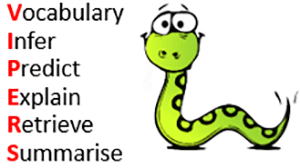 In Key Stage Two, we teach comprehension with a focus on our VIPERS (vocabulary, inference, prediction, explanation, retrieval, summarising) skills. We teach through whole class guided reading sessions and our learning is celebrated through a ‘grow with me’ working wall that develops throughout the half term.
In Key Stage Two, we teach comprehension with a focus on our VIPERS (vocabulary, inference, prediction, explanation, retrieval, summarising) skills. We teach through whole class guided reading sessions and our learning is celebrated through a ‘grow with me’ working wall that develops throughout the half term.
Children are exposed to high quality texts by a range of authors through guided reading sessions. We have invested heavily in our guided reading texts so that children in Key Stage Two have paired access to the books. This enables the children to follow the text whilst it is being read aloud. Furthermore, children are able to work closely with the book when completing learning tasks that require them to use evidence from the text or write in role of a character.
In addition to this, we have carefully selected our fiction guided reading books so that children are exposed to a range of main characters, including multicultural links. The themes within the books, particularly in Upper Key Stage Two, have been selected with the children’s personal, social, spiritual and emotional needs in mind. Furthermore, they aim to complement our core values of respect, trust, perseverance, friendship, hope and thankfulness.
Within our chosen books, each Key Stage Two class contain classics such as ‘Stig of the Dump’, ‘Treasure Island’ and ‘Tom’s Midnight Garden’; we have also included modern texts such as ‘Beasts of Olympus’, ‘Wonder’ and ‘Rooftoppers’. The books we have selected also demonstrate aspirational language and grammatical structure. 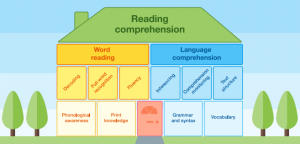
The ‘reading comprehension house’ illustrates that word reading and language comprehension are underpinned by a number of other building blocks of reading. These component parts build on one another and connect together as children learn to read.
Inspire
We aim to inspire children through author visits, book fairs, reading competitions, themed days and use of our library.
Wherever possible, we link reading to our topics and use opportunities to read cross-curricular in order for reading to be more purposeful.
An example of our ‘Bookshelf Books’:

An example of our guided reading texts:

Glossary of Terms
These terms are fundamental to phonics teaching and are taught explicitly to our children:
- Phoneme
The basic sound units of speech. There are approximately 44 phonemes in English (this differs depending on regional accents). - Phonemes can be combined to form words. For example, the phonemes /th/, /i/ and /ng/ combine to make the word thing.
- Grapheme
The written representation of a phoneme. A grapheme can be made up of 1,2,3 or 4 letters, e.g. c, sh, air, ough. Some phonemes can be spelt with different graphemes. For example, the hard ‘c’ sound can be made using a ‘c’, ‘k’ or ‘ck’ grapheme. - Digraph
A two-letter grapheme that represents one phoneme, for example ‘sh’, ‘ch’, ‘ee’, ‘or’ - Trigraph
A three-letter grapheme that represents one phoneme, for example ‘igh’, ‘dge’, ‘ear’ - Split digraph
When a digraph is split by a consonant it becomes a split digraph. Split digraphs usually create a long vowel sound, for example ‘a-e’ (take), ‘o-e’ (mode), ‘i-e’ (time), ‘e-e’ (these), ‘u-e’ (rude). - Blending
The basis of using phonics to read words. Children sound out each phoneme in a written word and then blend the sounds together to read the word. For example, t-r-a-p, blended together, becomes trap. - Segmenting
The basis of using phonics to spell words. Children listen to a word, break it up into separate phonemes and choose the appropriate grapheme to represent each phoneme. For example, chick can be segmented as ch-i-ck.
EYFS and Year 1 Phonics Evening for Parents and Carers Presentation
Grow the Code
Resources to Support Learning at Home
You can use the resources and videos below to refresh the work covered during the phonics session and to help your child with their phonics at home. The more practice they have, the more confident they will become…
Pronunciation of Reception Autumn 1 Sounds – Pronunciation_guide_Autumn-1
Pronunciation of Reception Autumn 2 Sounds – Pronunciation_guide_Autumn-2
Pronunciation of Reception Spring 1 Sounds – How-to-say-Phase-3-sounds
Year 1 Sounds – How-to-say-the-Phase-5-sounds
How to write capital letters – Capital_letter_formation
